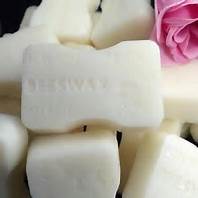Toxic Beauty - Hazardous To Your Health









Toxic Beauty- Hazardous To Your Health
It is ironic that cosmetic manufacturers continue to claim that their products will make us look and feel better when increasingly experts are concerned that the long-term effects on our health could actually be harmful. Contact dermatitis, asthma, skin, eye and respiratory tract irritation, skin sensitization, photosensitivity, immune and nervous system disruption, birth defects and cancer, are just a handful of the potential negative effects of many of the chemicals we regularly apply to our bodies.
It has become increasingly apparent that toxic chemicals accumulate over time and are transferred to the womb and through the food chain to our children. We can absorb chemicals through a number of routes including inhalation, ingestion, through the skin, placenta and breast milk abd via absorption through the mucous membranes in the eyes, mouth and nose. The total amount of chemicals in someone's body at any given moment is known as the toxic body burden.
While some chemicals and their breakdown products only remain in our bodies for a short period before being excreted, others are not readily excreted and can be stored in our adipose (fat) blood, muscle, bone, brain tissue and other organs. If we are continually exposed to an easily metabolized substance it can still contribute to our overall toxic body burden over a period of time. Certain chemicals can attack the body, for example, by damaging or killing cells or tissues or even altering DNA, the genetic material in the cell nucleus, which can lead to inheritable defects. Changed or mutated genes can instigate a process that can lead to cancer, birth defects, developmental and reproductive disorders. These types of chemicals are known as:
- Carcinogens - causing cancer;
teratogens - causing birth defects;
developmental/ reproductive toxicans - affecting the normal development of the fetus and subsequent child or damaging the reproductive tissues:
endocrine disruptors - causing damage by interfering with normal hormone functioning.
Toxic chemicals can, through the above routes, lead to a myriad of health problems. For example, phthalates are chemicals routinely used in personal care products and studies have shown that some of them are endocrine disruptors, with ostrogenic effects,. (mimicking the sex hormone oestrogen), feminizing male fetuses and highlighting an association between early puberty and premature breast development in young females.
Toxic chemicals can, through the above routes, lead to a myriad of health problems. For example, phthalates are chemicals routinely used in personal care products and studies have shown that mothers with high levels of phthalates in their bodies are giving birth to boys with a reduced anogenital distance ( the distance between the genitals and the anus, which is a sign of feminization.
Those who are exposed occupationally to high levels of chemicals are most likely to develop certain conditions. Also, although some people will feel healthy while using chemical-infused products, the affects of constant usage may not become apparent until later on in life and may appear unrelated to the products used. if you developed an illness would you instantly put it down to your use of cosmetic products?
Articles-Latest
- Skin tags: Why they develop, and how to remove them
- So That’s Why Your Skin Gets Crepey As You Get Older
- Eye Infection from False Eyelashes
- Teeth stain removal and whitening solutions
- Benefits of collagen for skin
- Why vitamin E should be part of your skincare regime
- Can gray hair be reversed?
- Hair loss affects 1 in 10 women before the menopause – here’s how to treat it
- Conscious ageing and Black skin: What happens when Black does crack?
- Your skin color may affect how well a medication works for you — but the research is way behind
- The C word Cancer
- Astringents
- How does light therapy work? The science behind the popular skincare treatment
- The Most Offensive Fashion Police Criticisms of All Time
- Everything you need to know about lip filler migration, as told by the experts
- Pig semen and menstrual blood – how our ancestors perfected the art of seduction
- Everything you need to know about benzoyl peroxide
- We've bleached, relaxed, and damaged our hair to make ourselves look more white
- Will this be the year that facial filler is cancelled?
- Shock of the old: 10 painful and poisonous beauty treatments
Cosmetic ingredients
LOGIN
Who's On Line
We have 71 guests and no members online
Articles-Most Read
- Home
- White Bees Wax
- Leucidal
- Cosmetic Preservatives A-Z
- Caprylyl Glycol
- Cosmetics Unmasked - How Safe Are Colorants?
- Cosmetics Unmasked - Choosing Ingredients
- Cosmetics Unmasked - Colorants And Fragrances
- EcoSilk
- Toxic Beauty - Who's Looking At Cosmetics?
- Cosmetics Unmasked - Fragrances
- Microbes and Cosmetics
- Chemicals Lingering In The Environment
- Yellow Bees Wax
- Microbes and Safety Standards
- Potassium Sorbate
- Toxic Beauty - Hazardous To Your Health
- Synthetics In Cosmetics - The Industry Fights Back
- What's Happening in the USA - Cosmetic Regulations - Toxic Beauty
- Fresh Goat's Milk Soap
- Active Ingredients
- Cosmetics Unmasked - Listing Cosmetics
- Toxic Beauty - Cocktails and Low Doses
- Natural Waxes A-Z
- Natural Butters A-Z



